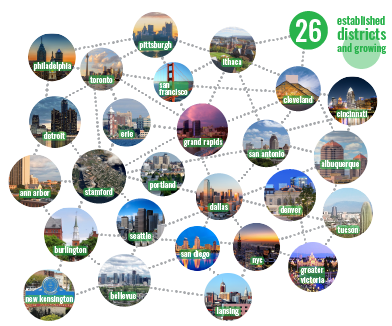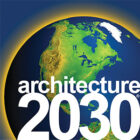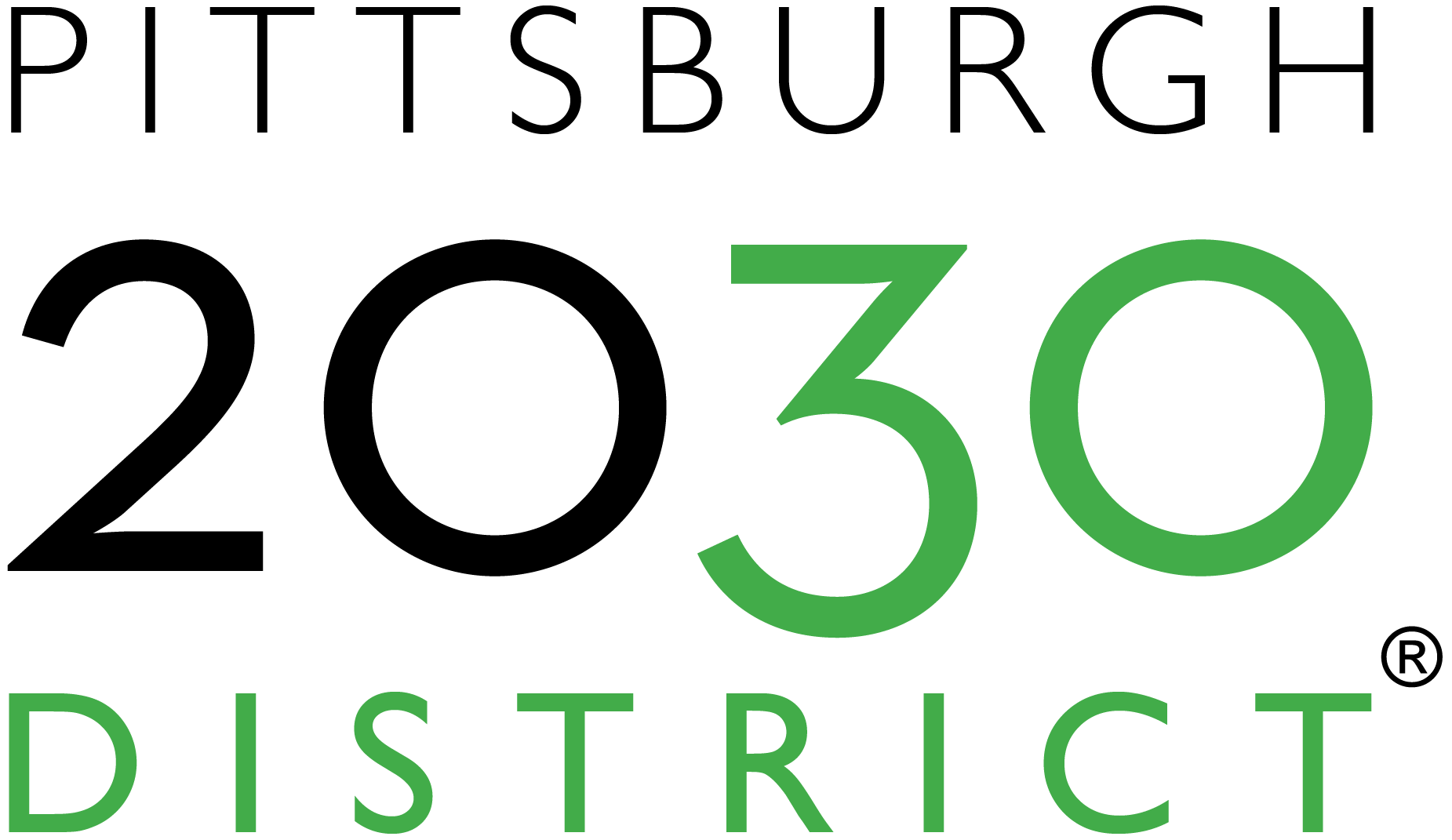As a founding member of the 2030 Districts Network, the Pittsburgh 2030 District provides property partners access to the support and resources needed to reduce emissions, energy demand, and water use, while improving indoor air quality.
Linked In A Powerful Network

Achieving District-Wide Goals Together
2030 Districts are committed to:
2030 Districts are meeting incremental reduction targets for new and existing buildings set by the 2030 Challenge for Planning, which was issued by Architecture 2030, a non-profit organization committed to transforming the built environment from a major contributor of greenhouse gas emissions to a central part of the climate crisis solution.

Private-Public Partnerships
2030 Districts are organizations led by the private sector, with local building industry leaders uniting around a shared vision for sustainability and economic growth – while aligning with local community groups and government to achieve significant energy, water, and emissions reductions within our commercial cores.
Property owner/manager/developers join a local 2030 District to help them make significant changes to their properties to create reductions necessary to transition to a low carbon economy.
